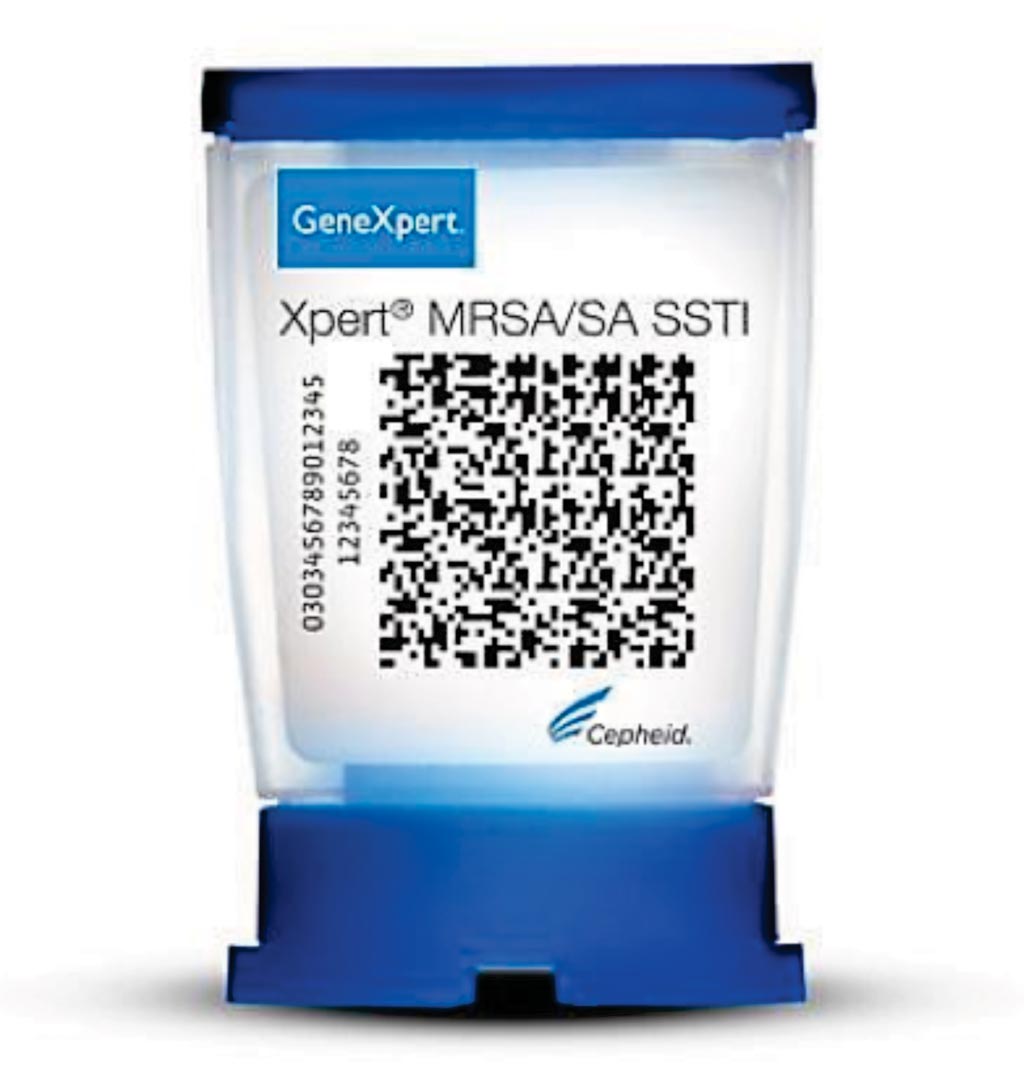Rapid Diagnostic Panel Used for Pediatric Musculoskeletal Infections
By LabMedica International staff writers
Posted on 31 Jul 2019
The findings from a retrospective analysis suggested that the use of a rapid musculoskeletal diagnostic panel, or MDP, could have shortened the time it took to identify the cause of infection, provide appropriate antibiotics and reduce the length of stay for children in hospital.Posted on 31 Jul 2019
The MDP, which was recently validated in another study, combined three separate tests: the Xpert MRSA/Staphylococcus aureus skin and soft tissue infection (SA SSTI) assay, a polymerase chain reaction (PCR) assays for ermA, ermB and ermC genes to determine clindamycin resistance; and a Kingella kingae PCR assay to identify the rtxA gene. Results from the Xpert MRSA/SA SSTI assay were available within three hours, and results for the PCR assays were available by 1400 hours the following calendar day.

Image: The Xpert MRSA/SA SSTI assay detects methicillin-resistant S. aureus (MRSA) & S. aureus (SA) in skin and soft tissue infections in less than one hour (Photo courtesy of Cepheid).
Scientists at the Children’s Hospital Colorado (Aurora, CO, USA) included in a study 53 children aged six months to 18 years who were admitted to the hospital with symptoms persisting for less than two weeks, had bone or joint specimens collected and were administered antibiotic therapy, excluding perioperative antibiotics. The investigators identified pathogens in 69.8% of patients (37/53) who underwent standard culturing techniques and in 13 patients (16%) who had a blood culture performed. The most commonly identified pathogen was S. aureus (47.2%), and methicillin-resistant S. aureus (MRSA) was identified in 16% of these patients. Two patients had clindamycin-resistant S. aureus, and one patient had a K. kingae infection.
The MDP identified most children with culture-confirmed S. aureus infection (88%), with three patients having MRSA. When cultured, all three patients were confirmed to have MRSA. Although the MDP identified three isolates as clindamycin resistant, culture showed that one of these isolates was clindamycin susceptible. The results showed that MDP would have saved seven hours to pathogen identification (45.6 hours; interquartile range [IQR] = 23-62) compared with standard microbiology culture techniques (52.5 hours; IQR = 36.1-65.6). Additionally, use of the MDP would have improved the time to definitive antibiotic therapy by nearly 22 hours and reduced the hospital length of stay by a median of 26.4 hours.
The authors noted that cost is an important factor when considering a new diagnostic tool like the MDA. Theoretically, the decrease in length of stay would justify its expense. Justin B. Searns, MD, a hospitalist and first author of the study, said, “No approved rapid diagnostic platforms currently exist for bone and joint specimens from pediatric patients with acute musculoskeletal infection.” The study was published on June 13, 2019, in the Journal of The Pediatric Infectious Disease Society.
Related Links:
Children’s Hospital Colorado














